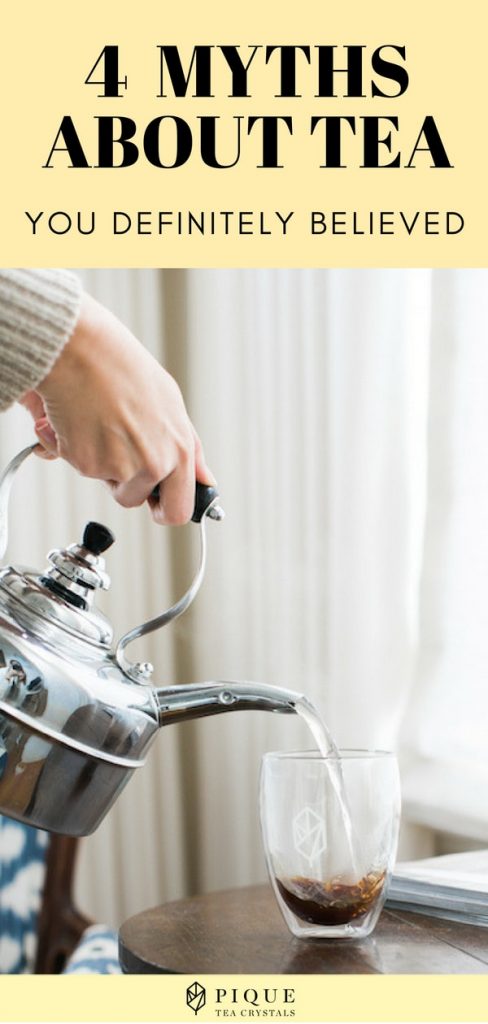4 Myths About Tea You Definitely Believed
Growing up, I suffered from a series of health problems such as asthma and sleep apnea. The medical treatments I received soothed my symptoms on a superficial level, but none actually made me truly healthier or stronger.
Being very young and refusing to resign myself to poor health, I endeavored to fundamentally recondition my body and prevent these problems from arising in the first place.
Being from the east, I started learning about ancient Eastern health traditions and visiting many Chinese medicine experts. I studied meditation and Taoism and was a student of Qigong meditation and tai chi. I dove into classical texts and visited masters across China, Indonesia, India, the United States, and Canada to learn how ancient health practices could structurally improve my health.
Along the way, I became passionate about the healing properties of plants, and I made the first of many trips to Yunnan province. Situated in the westernmost part of China and the foothills of the Himalayas, Yunnan is home to the largest biodiversity of fungi as well as the oldest tea tree in the world—a whopping 3,200 years old. Yunnan is likely where tea was first discovered by Shennong, the mythical sage ruler of prehistoric China, 4,500 years ago.
Yunnan’s ancient tea gardens and prehistoric tea tree forests enchanted me. Hundreds of years old and thriving with a vital life force, these tea trees are completely symbiotic with their environment and naturally immune to pests and disease. With roots that stretch twice as deep into the soil as the tree grows out of it, these ancient food sources draw nutrients and trace minerals from deep within the earth to feed their leaves.
Over the past 5,000 years, a number of essential practices for tea drinking have been established in alignment with both Traditional Chinese Medicine and Western scientific analysis. Studying the amazing substance in its natural habitat has proved an incredible experience for me, and I’ve seen the power of tea firsthand in my own health journey.
It’s important to be mindful of these ancient practices when consuming tea, for doing so will help you reap all the remarkable benefits the beverage has to offer. These four myths about tea have formed over the centuries, and it’s high time we set them straight:
1. Green tea detoxes are effective.
In China, it’s common knowledge that you cannot consume green tea on an empty stomach since its compound increases stomach acid levels. The tea can help you lose weight by boosting your metabolism, so you should not drink it before eating. Instead, opt for black tea in the morning or before meals and green tea after.
2. Tea is great for when you’re sick.
You shouldn’t drink tea while on medication, herbal or pharmaceutical since teas has many powerful beneficial and biological effects that counteract or interfere with other medicines.
3. Green tea is healthier than black tea.
The only reason green teas are perceived to be healthier than black teas is that they are more widely studied in the Western scientific community. In fact, the first tea to obtain FOSHU certification for its effect on weight loss in Japan was a black oolong.
In reality, both green and black teas contain powerful and beneficial antioxidants. A tea leaf turns from green to black through oxidation or fermentation much like a leaf plucked from a typical tree. The curing or drying of the leaf halts the oxidation and creates a green tea versus a white or black one. Over the course of this transformation, the antioxidants in green tea, such as catechins, are converted into the antioxidants in black tea, such as theaflavins.
Theaflavins and catechins are equally beneficial for different reasons. Green tea is great for boosting immunity, cellular regeneration, and metabolism while black tea can help with anything cardiovascular related such as detoxifying lipids and sugar from the blood. People in Hong Kong and Southern China have been drinking black Pu’er tea with heavy meals to help digestion for centuries. Natural diabetes remedies made from Pu’er are also popular in China.
4. Green tea is highly caffeinated.
It’s general knowledge in China that black tea contains more caffeine than green tea. Of course, this is not 100 percent definitive as there are such a huge variety of different black and green teas cured in myriad ways. But if you want a nice caffeine kick without coffee, opt for black tea over green.
Reposted from mindbodygreen.com












